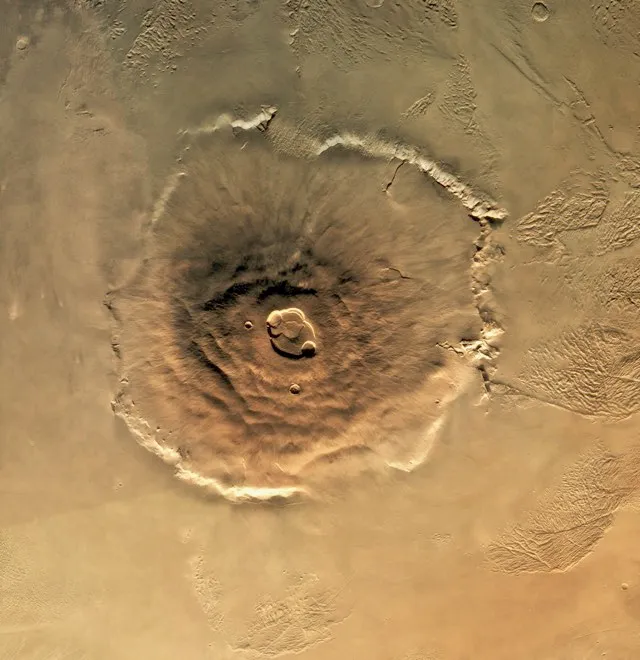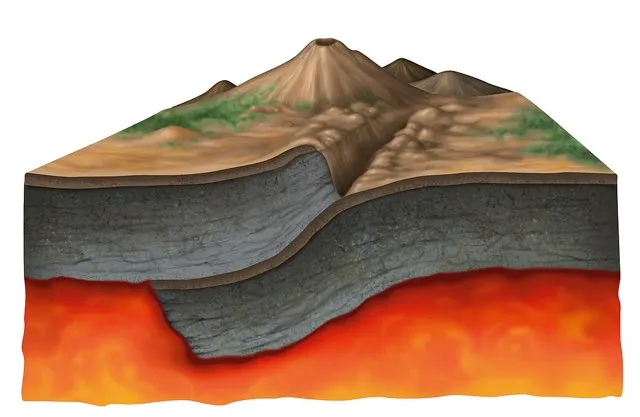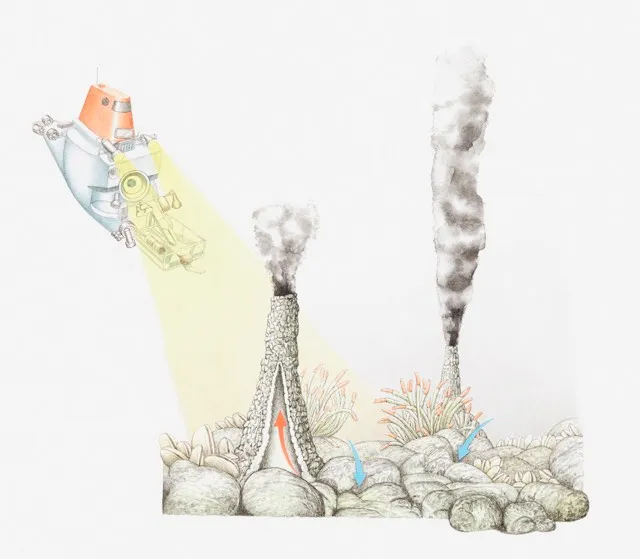Volcanoes are amongst the most powerful natural forces, and the most spectacular. We look at volcanoes in awe and are terrified by their unpredictability.
But volcanoes play such an important role in life on Earth, even for those who have never stepped foot on one. And our planet isn’t the only one subject to their highly destructive, but extremely important activity.
1
Volcanoes are also found on other planets and asteroids

We have very good evidence of volcanic activity on Mars, Venus, the Moon, Jupiter’s satellite Io, the asteroid Vesta and possibly Mercury. On Io, images of volcanic plumes, similar to our terrestrial ones, have been captured by satellite.
The surface of the Moon and Mars are dotted by calderas – a crater formed by the inward collapse of a volcano.
2
There is no other known planet, so far, that has the plate tectonics we see on Earth

Plate tectonics account for about 60 per cent of the volcanism on Earth, along constructive and destructive margins (i.e. mid-ocean ridges and subduction zones, respectively).
We still don’t completely understand the reason why plate tectonics are present only on Earth. Many arguments point to the importance of extensive water bodies on the Earth’s surface: these may favour subduction of wet marine sediment, which in turn can help generate the low-density continental crust encouraging the subduction. However, we still have a long way to go before we have a complete understanding of our Earth and other planets.
3
Our atmosphere is the result of volcanic activity
Early Earth's atmosphere, 4.5–3.5 billion years ago, was dominated by carbon dioxide (CO2) released by volcanoes. This carbon dioxide was fundamental for photosynthesis.
Buried organic carbon, and the photosynthetic process, led to the accumulation of oxygen and volcanic vapour (H2O) condensing to form the oceans. It took 2 billion years to reach a significant concentration of oxygen and since then the atmosphere has evolved to its present composition.
Read more about volcanoes:
- How to survive inside one of Earth’s deadliest volcanoes
- What would happen if you dropped a bomb into a volcano?
- Computer model may help to more accurately predict volcano eruptions
4
Volcanoes have also been fundamental to the origin of life via submarine hydrothermal vents

Known as submarine ‘smokers’, these hydrothermal vents are heated by volcanic activity. The temperature can vary from hot environments (up to 400°C) to a warm one (50–90°C).
Generally the hotter vents are called black smokers because they emit clouds of black particles rich in sulfur-bearing minerals; these minerals are characteristic of the deep-sea environment. The colder vents mostly emit white clouds of materials and they are called white smokers. Submarine smokers can provide a warm reactive habitat suitable for hosting a variety of microbial communities.
On dry land, solfatara fields, consisting of soil, mud holes and surface water heated by volcanoes (up to 100°C at the surface, higher at depth), represent another environment in which microbial life flourishes.
Such hyperthermophiles, believed to be among the first living cells, need only water, trace minerals and heat. All these ingredients can be found at both hydrothermal vents and solfatara fields.
5
Since the beginning of our journey on Earth, humans have been fascinated by volcanoes’ breathtaking beauty

The earliest humans must have known that the lands around volcanoes were rich and fertile. It is no coincidence that our early ancestors evolved in Africa, in the volcanic region of the East African Rift.
Active volcanoes, of course, pose a threat for those living nearby, but life on Earth would have been impossible without the key role played by volcanoes in the development of the atmosphere and fertile soils.
Volcanoes and Earthquakes by by Chiara Maria Petrone, Roberto Scandone and Alex Whittaker is out now (£14.99, Natural History Museum)

